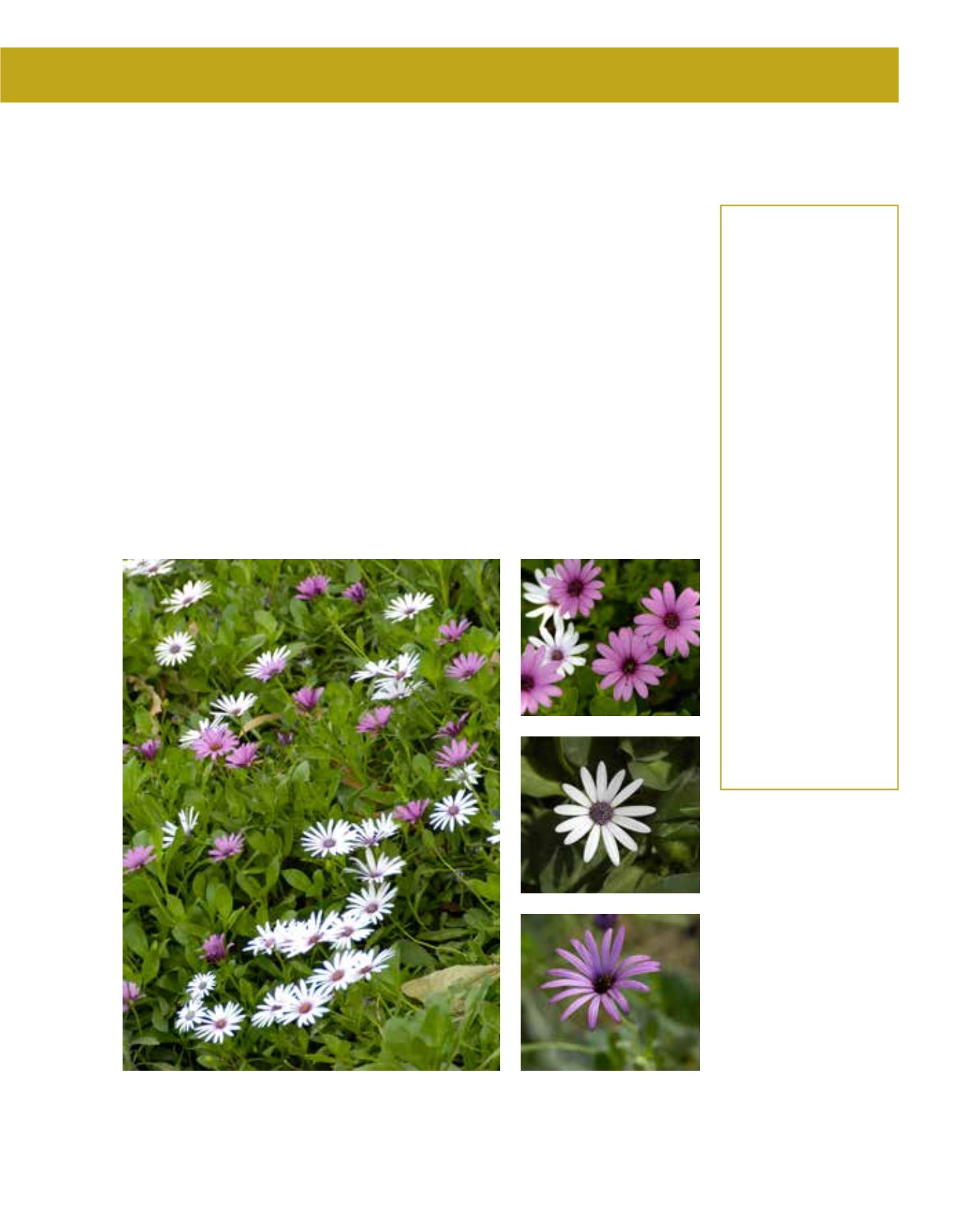

GENERAL
Origin
:
Mediterranean,
sub-tropical
Vigour
:
fairly fast
growing
Humidity
:
very arid, semi-
arid, semi-humid,
very humid,
extremely humid
Propagation :
sowing and
pricking out,
layer, cuttings
Maintenance :
moderate
CONDITIONS
Urban climate :
resistant
Dessication :
resistant
Stagnant water :
vulnerable
Irrigation
:
medium
Salinity/ppm :
moderate (2000
ppm)
Hardiness
:
0°C
SHAPE
Type
:
perennial
Height
:
0.2 m-0.3 m
Spread
:
1 m-2 m
Foliage
:
evergreen
FLOWER
Colour
:
white, lilac, dark
violet
Size
:
5 cm - 8 cm
Period
:
January -
December
FRUIT
Type of fruit :
achene
Fruit size
:
0.8 cm
The African Daisy is a fast-growing groundcover for large open spaces and on slopes. It grows in
full sun, thrives with moderate watering, but takes some drought; most types of soil are accepta-
ble, and the plant is wind-resistant. Pests and diseases are rare, which means this South African
plant is ideal for low-maintenance uses. Too much fertiliser results in leggy, tender stems that
grow criss-cross while extreme heat in Arriyadh can cause the plant’s growth to stagnate. The
foliage is spoon-shaped, bright green and some 5 cm in length. In blossom for most of the year, it
is topped by scores of spectacular daisy flowers some 8 cm across. The outer ring is either white
or lavender with a violet centre of fertile inflorescences. Spent flowers may be discarded to en-
courage the development of new buds. The plant grows 20 to 30 cm high, but spreads readily by
creeping stems that become rooted wherever they touch soil. It is therefore very easy to propagate
by cuttings or separating layers. African Daisies look well cascading over edges, in containers
or in beddings. They suit rock gardens and like border planting alike, and since they need little
attention they may be grown in both private gardens and public parks. In colder climates, they
are grown annually or as pot plants, since they flower abundantly even when young. Despite its
vigorous growth the plant does not escape from its designated site. In the immediate neighbour-
hood, slow-growing perennials or small shrubs that could be overgrown should be avoided.
218
Osteospermum fruticosum,
Asteraceae
African Daisy,
Shrubby Daisybush
















